Oppo Find X2 Pro camera review: the master of all shooters
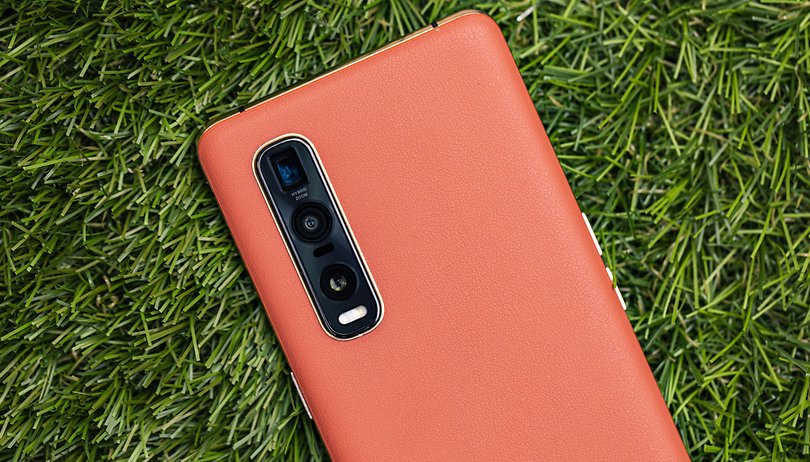

Read in other languages:
I'm sorry, Oppo who? Although the parent company BBK is preparing to become the world's largest smartphone manufacturer, Oppo is still little known in parts of the world. The Find X2 Pro impressed Shu when he did the regular review, and now comes our detailed camera test.
Mega-telephoto zoom, mega-wide-angle, mega-megapixel: the competition for the best specs in cameras is getting crazier and crazier. At the same time, more and more complex algorithms are required to cope with the sometimes chaotic camera setups. Compared to many a competitor, Oppo uses a relatively simple triple camera on the Find X2 Pro, but it also has its pitfalls.
The good news first: the camera in the Oppo Find X2 Pro is excellent and, in many areas, it leaves even the imaging systems of more expensive competitors behind. In addition to evaluating the image quality, of course, we set ourselves the task in this review of explaining the camera's special features and untangling the manufacturer's marketing rubbish.
Spoilers: the Native Dual ISO may shake your knowledge of cameras to the core.

The camera system at a glance
Three rear cameras including an ultra-wide-angle, wide-angle, and a 5x telephoto sensor, plus one selfie camera: the Oppo Find X2 Pro does without unnecessary gimmicks like depth sensors or 2-megapixel macro cameras, which at best help the datasheet and eager stingy sellers.
Cameras in OPPO Find X2 Pro
| Ultra-wide-angle camera | 48 megapixels | 1/2 inch | F2.2 | Sony IMX586 |
| Main camera | 48 megapixels | 1/1.43 inch | F1.7 | Sony IMX689 |
| 5x telephoto zoom camera | 13 megapixels | 1/3,44 inch | F3.0 | — |
| Selfie camera | 32 megapixels | 1/2.8 inch | F2.4 | Sony IMX616 |
The Find X2 Pro's strengths are clearly to be expected at low focal lengths. Here you'll find two large sensors that promise good image quality. The telephoto camera, on the other hand, falls away considerably with the tiny sensor - and probably belongs more in the gimmick drawer.
The main camera
The main camera in Oppo Find X2 Pro is the Exmor IMX689. Apart from the lush surface given by the 1/1.43-inch format, the Sony sensor has a few exciting features. Depending on the task, the sensor uses the full 48 megapixels or quarters of the industry standard, 12 megapixels.
Switching between 48 and 12 megapixels is done manually in the camera app. By default, 12 megapixels are selected, and you can leave it at that. The most noticeable difference is the file size, which is roughly tripled when using 48 megapixels. The detail rendition is as excellent as the color rendition under good lighting conditions. The photos are colorful and vivid, but without overdriving the colors as much as some of my competitors. I didn't notice any problems with color casts or incorrect white balance during the test period.
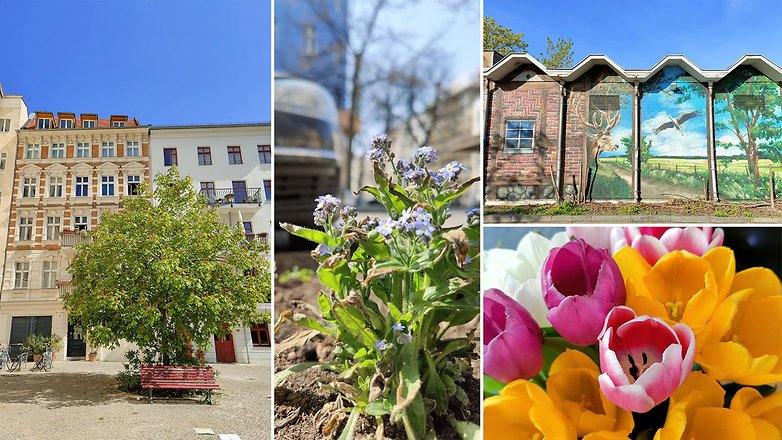
The automatic HDR works reliably. I did not observe problems with subjets. Oppo is way ahead of the 108-megapixel competition on this point - the algorithms just seem to work better. With not even half the number of pixels, the demands are also much lower.
One more word about the sensor: the high real focal length of the lens, which is connected to the large format, ensures a low depth of field. On the sunny side, there is then a gentle optical bokeh for close-ups, which is still ahead of the rendered background blur. However, high-contrast transitions close to the plane of focus tend to fray in a halo-like manner.
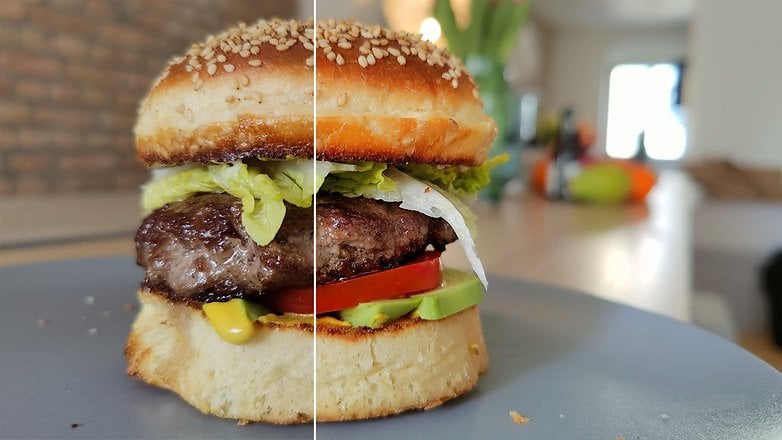
Finally, in low light, the Oppo Find X2 Pro's standard mode photos lose detail, contrast, and sharpness relatively quickly, and the fairly brisk night mode improves the muddy results enormously, but always has to be activated manually. Problems with motion artifacts are rare in night mode, but do occur with fast-moving subjects.

100 percent pixel focus
The previously mentioned quartering of the resolution is achieved using Sony's microlens technology called 2x2 OCL, which means that a separate microlens is placed over each of the 48 million pixels on the sensor - even though the Bayer filter itself only resolves 12 megapixels. The trick with the numerous micro-lenses makes it possible to carry out a horizontal and vertical phase comparison for each pixel quartet. The sensor thus has an area-wide phase comparison autofocus with several million cross sensors.

The result is impressive: In photo and video mode, the camera focuses sharper than you can see. During the test period - at least with the wide-angle camera - not a single misfocusing occurred. The autofocus works exceptionally well even in low light conditions.
For portrait photos, the Oppo Find X2 Pro is a good choice. Candid photos benefit from the extremely fast autofocus. Oppo offers 1x and 2x enlargements and both portrait focal lengths use the main camera. Thanks to the generous sensor area and the resolution reserves, this digital double zoom is no problem. The reproduction of skin tones is accurate.
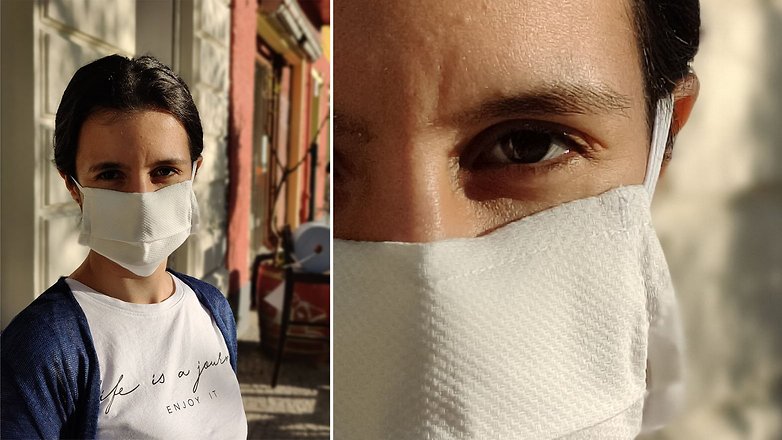
Instead of letting the user adjust the intensity of the obligatory bokeh effect with a random f-stop, Oppo displays a percentage scale. The factory setting is 60 percent and delivers decent but nice results as you can see in the picture above. It is a pity, however, that the intensity of the bokeh effect cannot be adjusted later.
12-bit recording
Finally, Oppo proudly promotes the Find X2 Pro as the first smartphone to support 12-bit recording. This color depth describes how many shades of brightness each individual color channel can distinguish. With the 8 bits specified for JPEGs, this is 2⁸, i.e. 256 nuances: 10 bits then correspond to 1024, and 12 bits to 4096 brightness levels.
If the brightness levels run out in either human or algorithm-driven image processing, so-called banding effects can be seen in fine color gradients, i.e. clear differentiation between individual colors. In practice, this problem occurs mainly with extremely fine color gradients, for example with blue skies. However, when you encounter banding effects on today's smartphones, it's more an algorithm than a sensor color depth problem - the Xiaomi Mi Note 10, for example, often drew unsightly borders in our camera review.
For this test, I took comparison photos in RAW with the Xiaomi Mi Note 10 (Samsung Isocell Bright GW1) and the Oppo Find X2 Pro (Sony Exmor IMX689). With the same exposure, identical RAW processing and the same extremely destructive contrast settings, there is no significant difference between the two smartphones.
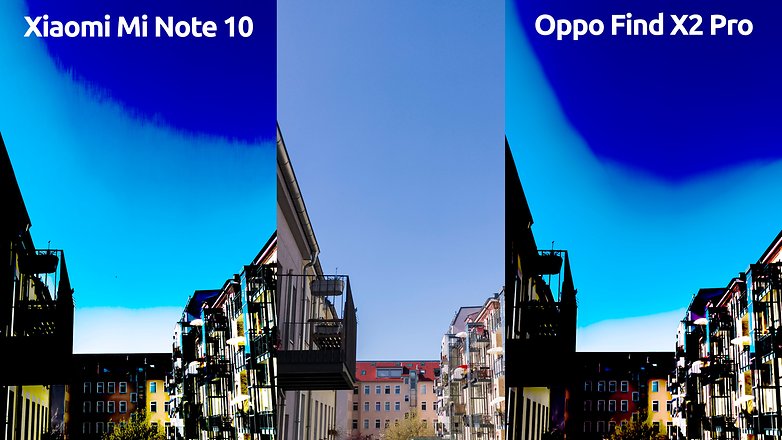
Dual Native ISO
Last but not least, the "double native ISO sensitivity" would have a good chance of becoming the next feature donkey being driven by marketing departments around the globe - if only it weren't so complicated to explain it as strikingly as a gigantic megapixel number. But the feature itself has its justification and is not wrongly found in high-end cameras.
Simply put, dual native ISO sensitivity gives the user or camera the ability to capture extremely bright and dark areas of the image with greater flexibility and better detail. However, humans and algorithms must also be able to use the possibilities.
Basically, the higher the ISO setting, the more detail is reproduced in bright areas of the image. The reason for this is that the increasingly stronger signal amplification in image processing shifts the position of the gray point in the dynamic range downwards. If a dual ISO camera now switches from the lower to the higher native ISO sensitivity, there should be an abrupt loss of detail in the bright areas of the image as the gray point jumps up in the dynamic range.

Unfortunately, I was not able to provoke this phenomenon in my test. But it is possible that in manual mode there is no access to both ISO sensitivities. We're still on the trail of double sensitivity, though - presumably we'll be seeing more and more of this in the coming months. As I said at the beginning: at the end of this camera test, you'll find a more detailed digression on ISO and Dual Native ISO.
The ultra-wide-angle camera
Forget the small-sensor panorama cameras with which LG started the ultra-wide-angle trend in smartphones a few years ago. The Find X2 Pro has a 48-megapixel sensor in 1/2 inch format with the Sony IMX586. Just a reminder: the chip was still the main camera in the Honor View 20, which was introduced in 2019.
However, the Oppo Find X2 Pro doesn't reach the 120-degree angle of view advertised by the manufacturer. With a crop factor of 5.41 on the IMX586 and a focal length of 3.05 millimeters according to EXIF, we arrive at a calculated 16.5 millimeters equivalent focal length - or 105.3 degrees. And a direct comparison with the ultra-wide-angle photos from the Samsung Galaxy S20 Ultra also shows: Samsung is wider.
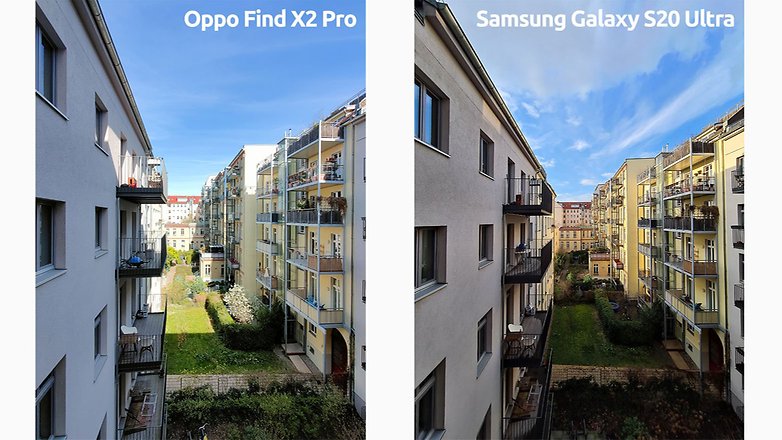
The bottom line is that the wide perspective in combination with the technical prerequisites still makes for fun. As with the main camera, the color reproduction in daylight photos is very successful. The dynamic range is a touch less so. There are more likely to be eroded highlights. Moreover, the colors look a bit more saturated. The images of the two modules are similar enough to make the results of the Oppo Find X2 Pro look as if they came from one source.

The comparatively large sensor also performs better than average in poor lighting conditions. Dark image areas slowly build up noise. But the colors remain largely stable and the detail rendition is still good. In direct comparison with the main camera, a blurring is only visible with fine textures.

Last but not least, the ultra-wide-angle module functions as a macro camera. However, the practical implementation of the macro mode is a bit confusing. If you get closer and closer to the subject, the app automatically switches to the ultra-wide-angle module from a distance of about ten centimeters, which changes the viewing angle significantly at that short distance. Furthermore, I personally am not a big fan of ultra-wide-angle macros, since the background is not very compressed and is comparatively sharp. At least, in manual mode, Oppo saves the jumping back and forth.
The telephoto zoom camera
While ultra-wide-angle and wide-angle cameras have large sensors, a tiny sensor is located behind the periscope of the telephoto zoom camera. The 1/3.44-inch small chip provides less than half the area for incident light compared to the Sony IMX586 in the ultra-wide-angle module. Just a reminder: Samsung relies on the same IMX586 for its S20 Ultra telephoto camera.
While Oppo does not give away the focal length and only talks about a 10x hybrid zoom, the focal length can be roughly calculated. The crop factor of the 1/3.44 inch small sensor is about 8.25. Multiplied by the real focal length of 15 millimeters from the EXIF data, this results in a 35 mm equivalent focal length for the periscope camera of 123.75 millimeters. Compared to the main camera with about 25 millimeters focal length, this corresponds to a fivefold optical zoom, the rest is digital zoom.

In good lighting conditions, the telephoto zoom delivers acceptable images with an angle of view that was unthinkable for smartphones until recently. Yes, I can hear fans of Galaxy S4 Zoom & Co. out there, but let's face it: smartphone telephoto zooms have only been on the mass market for about a year. In any case, the fair-weather telephoto images from the Find X2 Pro look usable when viewed in a smaller format, and should still look nice even in the form of small-format prints.
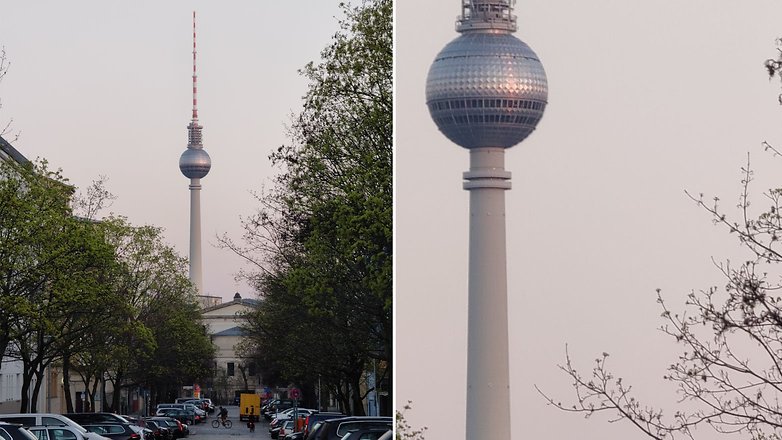
In low light conditions, the quality of the telephoto camera collapses as expected. The photos then become so quickly slushy that the Find X2 Pro decides to take an extraordinary step below a certain brightness. Instead of using the telephoto camera, the smartphone photographs with the main sensor and zooms digitally into the picture. As expected, the results are very poor. In any case, the image quality profits enormously from the night mode, which would like to be manually activated here as well.
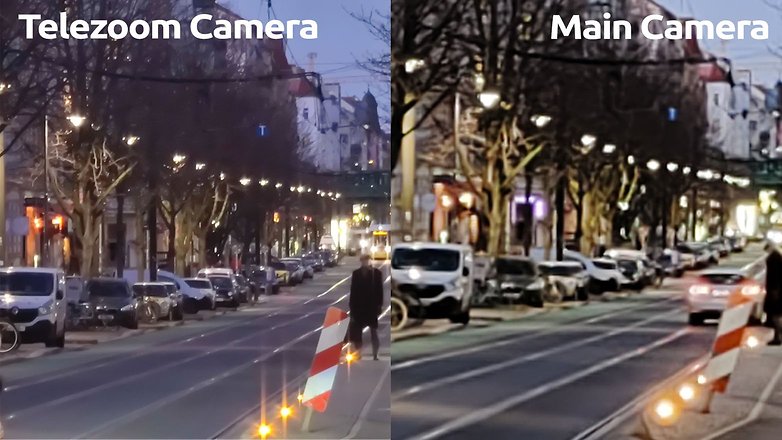
Sometimes the switching between main and telephoto camera also happens with the same subject. The telephoto photo might not be very good here, but switching to the 48-megapixel chip makes the result worse. The EXIF data reveals which sensor the Find X2 Pro uses.
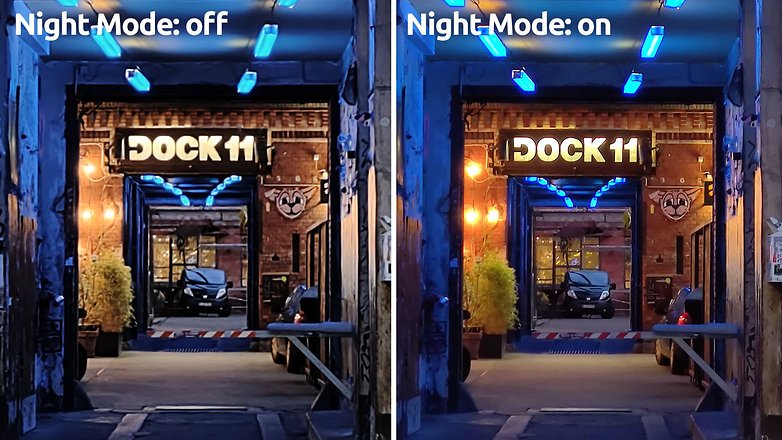
The selfie camera
The front camera squeezes many pixels into a small space: 32 megapixels crammed into the 1/2.8 inch sensor. Although the Sony IMX616 is also a sensor with a quad-Bayer filter, Oppo outputs the full 32 megapixels - instead of 8 megapixels in quarters.
In good lighting conditions, the selfies are generally beautiful and colorful, but the noise is magnified, even in daylight. Accordingly, the level of detail is not as good as the resolution might promise.
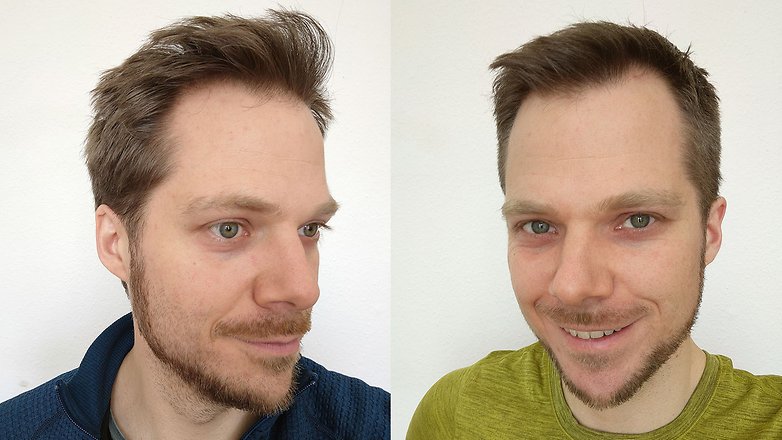
The image noise increases quickly in low light conditions, but the quality is satisfactory for the usual selfie destinations like Instagram, Facebook & Co. If you have bigger plans with the photos, you should use one of the cameras on the back.
Conclusion
The Oppo Find X2 Pro has a camera that's reasonably good in its price range, and it's really good fun for long distances, not least thanks to its excellent autofocus system. The photos taken with the two wide-angle cameras are excellent and look as if they are one piece. Personally, I like the accurate color reproduction compared to many competitors (Samsung, *cough*).
However, there are also two brakes on the fun. First, the somewhat choppy behavior when exceeding the close-up limits of the telephoto and wide-angle camera is annoying. And secondly, the telephoto camera is so weak-chested that it is sometimes simply replaced by the main sensor. Unfortunately, the behavior of the camera is not always conclusive here.
But if you shoot mainly with the two wide-angle modules and don't expect too much from the zoom, you'll find one of the best camera systems on the market at the moment in the Oppo Find X2 Pro.
Digression: ISO sensitivity and dual-native ISO
Let's start with ISO - or sensitivity. The individual silicon crystal pixels on each image sensor initially supply an analog signal upon exposure, the voltage of which depends on the amount of light. This signal now passes first through an analog amplifier. The native sensitivity of the sensor depends on the pixels and the gain of this hardware amplifier.
The signal then passes through an analog-to-digital converter and is chopped up at will in the digital image processing processes of computational photography. Adjustments of the sensitivity beyond the analog-to-digital conversion now only shift the so-called gain, but do not change the sensitivity of the sensor itself. The result is that even for camera professionals, there is little intuitive development in terms of image quality at different ISO values.

The Blackmagic Pocket Cinema 4K, for example, has two different native sensitivities. Above ISO 1000 the camera switches from low to high. The diagram provided by the manufacturer clearly shows that adjusting the ISO values does not shift the dynamic range, but only the grey point (transition between pale and dark yellow) - thus redistributing the image information while keeping the dynamic range constant.
As can be seen from the diagram above, an additional, second sensitivity - achieved by an additional analog gain loop in the sensor before the analog-to-digital converter - extends the range of applications of cameras. As with dual-ISO professional cameras, however, the same applies to image processing in the smartphone: You have to know how to use the technical possibilities.
Example: ISO 1000 is better suited for the Blackmagic Pocket Cinema 4K to display subjects with many bright details - in the brighter spectrum above the 18 percent neutral gray point, there is simply much more information available. As a result, detail rendition for bright details is much better at ISO 1000 with 5.3 vs. 2.0 light values range than at ISO 100. On the other hand, ISO 100 is much better for capturing night scenes or low-key material, which is more relevant for scenic work on the film set.
What we generally understand as ISO sensitivity comes from a somewhat far-fetched comparison to analog photography, which however loses more and more of its substance - and would be as obsolete as a Tesla Model 3 choke in the age of computational photography.

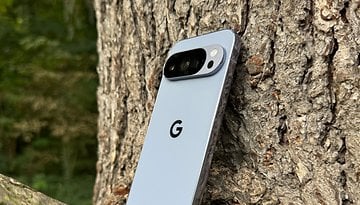

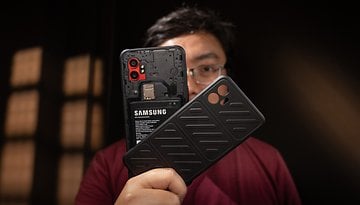










I'm missing the link with the high resolution photos on Google Photos
The price is ludicrous